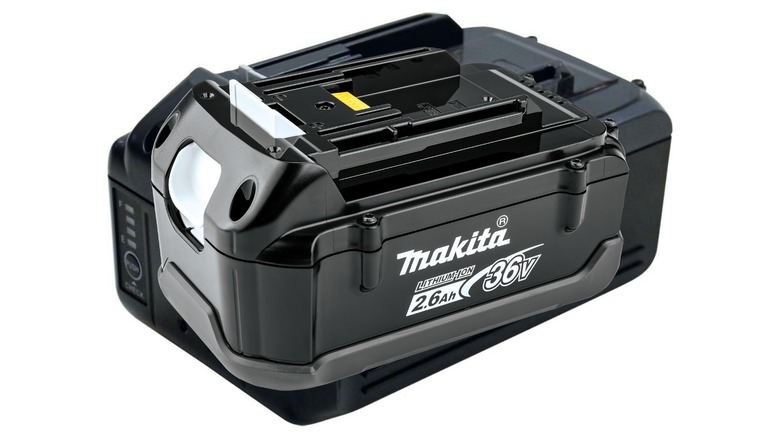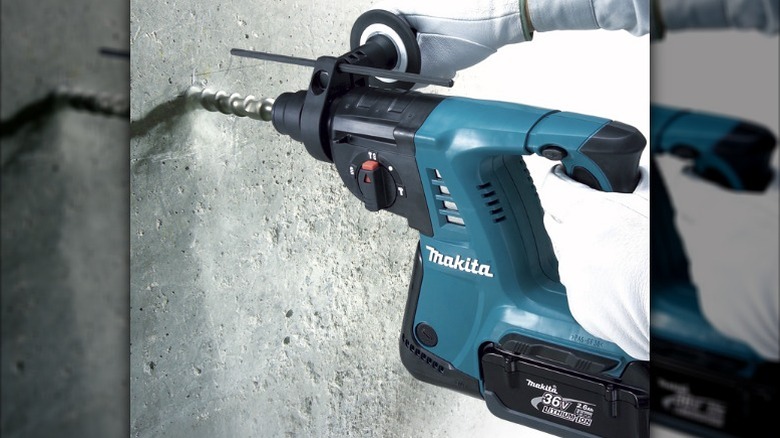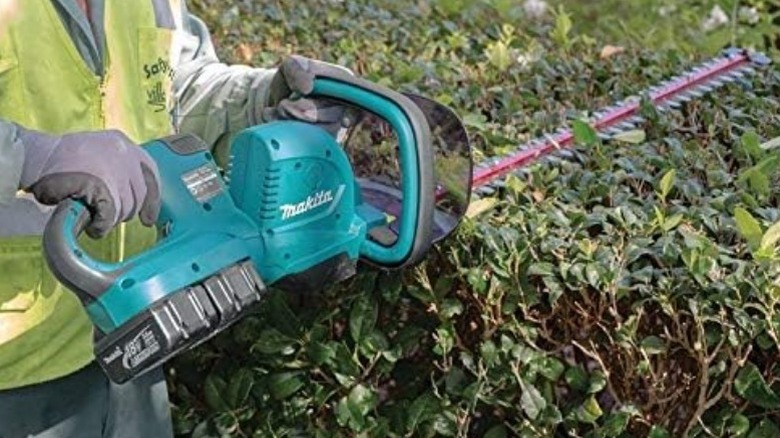What Happened To Makita's Original 36V Power Tools And Batteries?
We may receive a commission on purchases made from links.
Makita is widely acknowledged as one of the best power tool brands on the market. It has managed to maintain this sterling reputation by offering a wide range of powerful and efficient products and cutting-edge technology that isn't available from any other brand. This is particularly true of its cordless tools, which have been powered by several iterations of Makita's proprietary battery technologies over the years. One thing you need to consider before buying Makita tools is which of these battery systems you want to run with, but you should also consider that some of these systems are no longer in production.
Several of Makita's power tool batteries have been replaced, phased out, or dropped altogether from the company's catalog. Not long ago, Makita had an entire line of original 36V power tools and batteries on the shelves. These batteries offered double the voltage of the company's 18V LXT models and were designed to power heavy-duty tools that required more juice than what the smaller batteries could provide. You can still find a few of these batteries online from retailers like Amazon, but the system seems to have all but disappeared from storefronts across the U.S. This has left many of the company's fans to wonder what happened to the 36V system and why it isn't around anymore.
The short history of Makita's 36V power tool system
Makita launched its first lithium-ion battery-powered tool in 2005, marking the shift from the nickel-cadmium batteries that had been the industry standard at the time. Then, just a few years later, on September 3, 2009, Makita announced its original 36V system. The first tool to be powered by this system was the 36V LXT Lithium-Ion Cordless 1" Rotary Hammer Kit (BHR261). This was launched alongside the first battery, and it seemed like the start of a long line of high-powered tools that would be able to draw power from it.
"The BHR261 is powered by Makita's 36V LXT Lithium-Ion Battery Technology and Rapid Optimum Charging System, a breakthrough in cordless technology producing 430% total lifetime work with two-and-a-half times more battery cycles when compared to traditional 36V Ni-Cd batteries," said Makita. "The Rapid Optimum Charger is ENERGY STAR rated for its charging efficiency, and will charge a Makita 36V LXT Lithium-Ion battery in just 30 minutes."
It wasn't just marketing, either. This first tool was well received by critics and seemed like a solid performer. A handful of other products were released shortly thereafter, such as the 36V 300mm Brushless Straight Shaft Trimmer (BC300LDZ) and the 36V Cordless Lawn Mower (BLM430), but the number of tools that were produced for the battery system was extremely small and it wasn't long before the line dwindled into obscurity.
Why Makita phased it out
It's hard to say exactly why Makita discontinued the original 36V line. Some have speculated that it was never particularly popular (despite the excellent performance of its tools) due to the high cost of the 36V line's batteries and products. This makes sense, as that first kit alone retailed for a whopping $899. It's easy to see why a price tag like that might be hard for consumers to swallow, though it's impossible to say for certain without access to Makita's sales information. One thing we do know is that Makita eventually replaced its original 36V with the Makita X2 36V system.
Just a few years after Makita released its first 36V system, the company announced a new method of powering heavy-duty equipment. Instead of creating a separate line of tools that would require their own high-voltage batteries, Makita opted to make tools that would be able to run on two of its already popular 18V LXT batteries. This meant that Makita fans who already owned a selection of 18V batteries for their other tools could pick up the larger, more power-hungry devices without needing to invest in a separate system. According to the company, this solution also offers similar performance specs to the original, so customers can get their tools more affordably without having to sacrifice power.
As of 2019, Makita now also has a 40V Max line of lithium-ion batteries. These offer even more power than either of the 36V lines, for those who need a little extra oomph, so it now seems even more unlikely that the dedicated 36V system will ever return.


